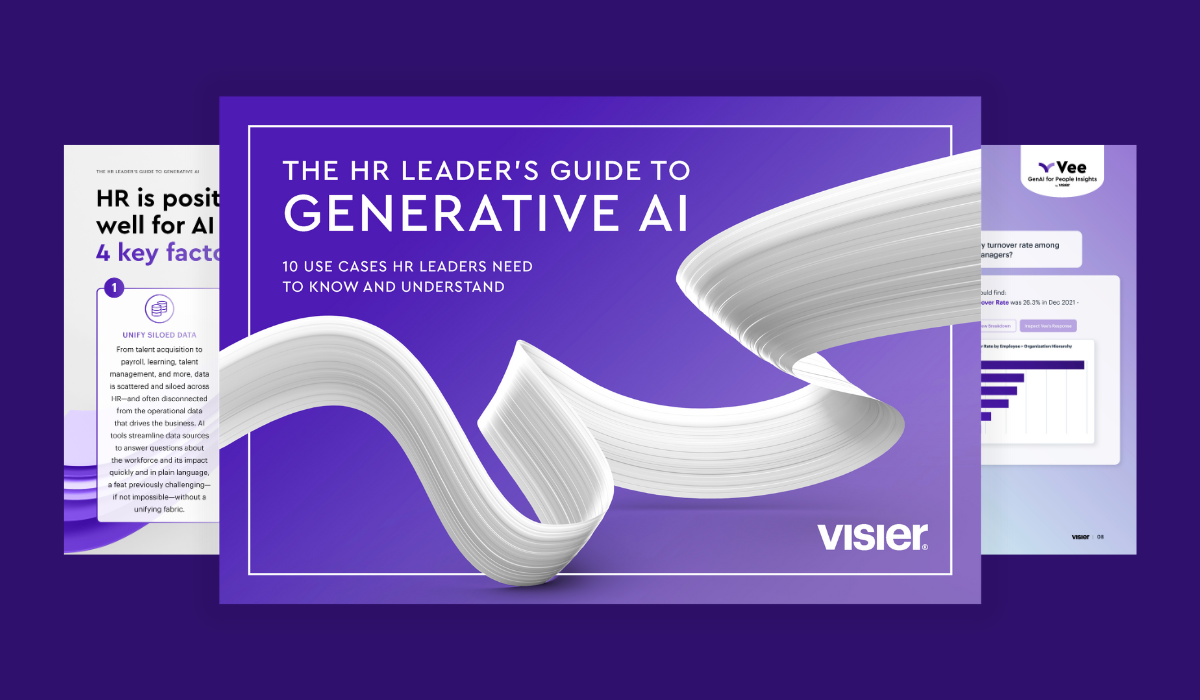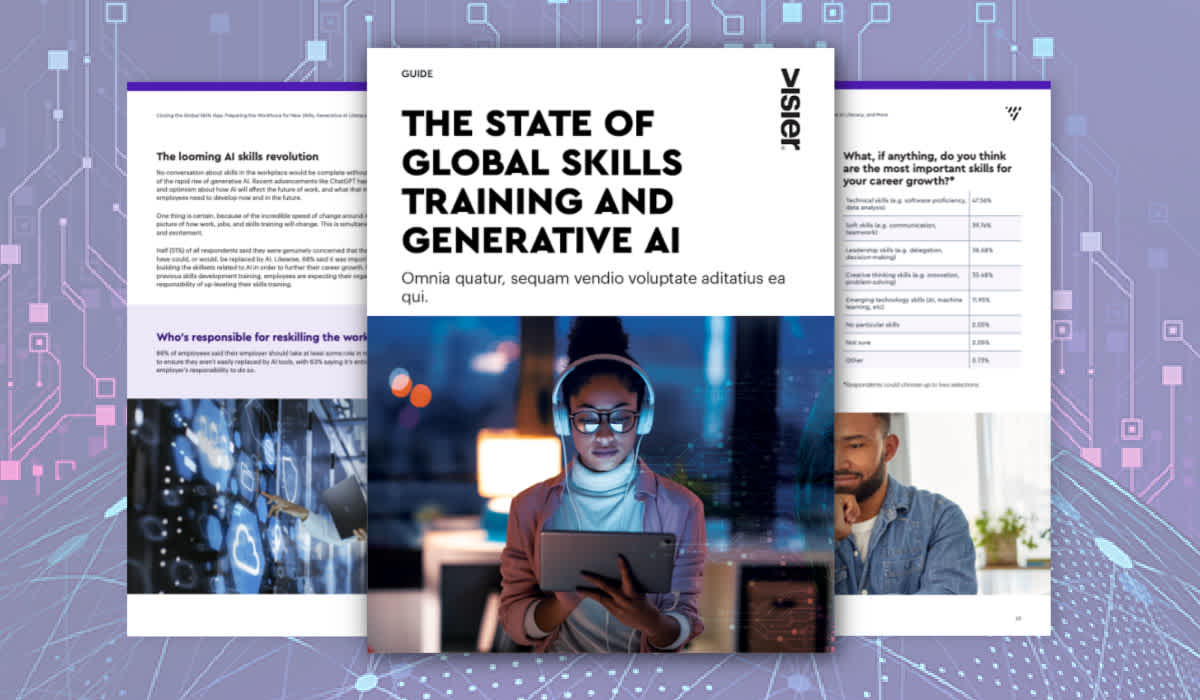10 Questions Vee Can Answer for People Analytics Leaders Instantly
Vee, Visier's genAI assistant, answers questions for people analytics leaders about the workforce in seconds. Take a look at 10 real examples of answers from Vee.
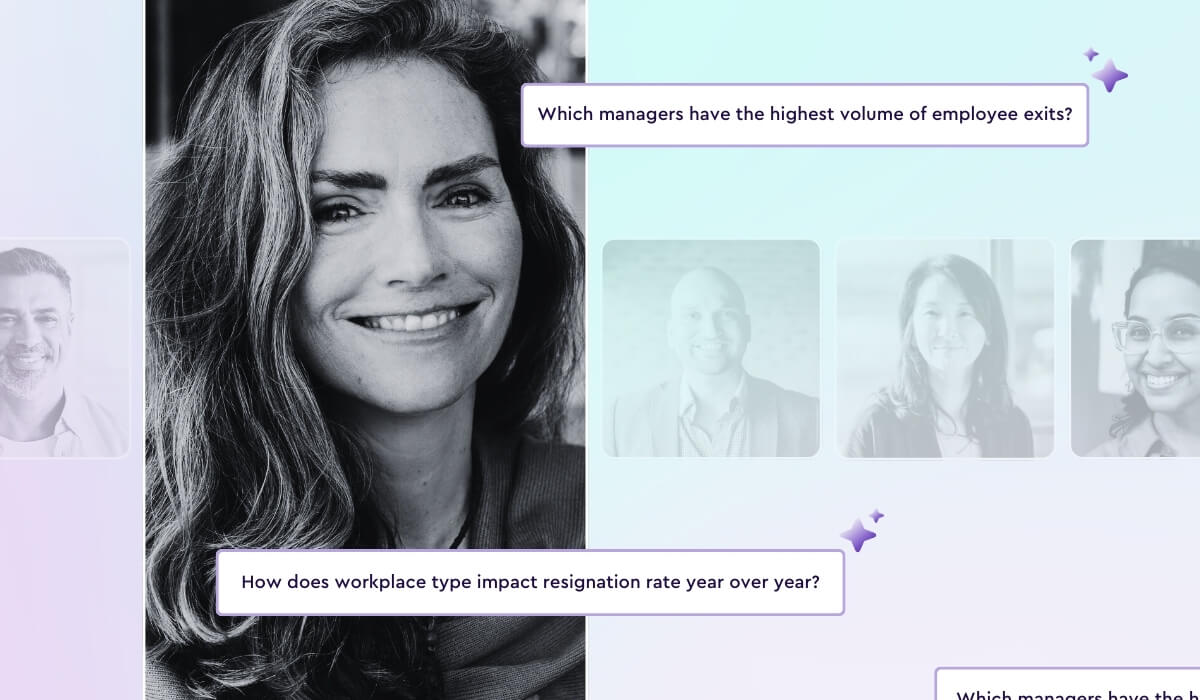
This post is part of a series of questions to ask generative AI for people analytics. Explore other posts in the series to learn which questions AI can answer for workforce planning leaders, compensation and total rewards teams, HRBPs, frontline managers, and CHROs.
Generative AI (GAI) is rapidly changing the way we work across every inch of organizations. Customer service teams deliver 24/7 support with GAI chatbots and virtual assistants, accounting teams use GAI to quickly create Excel formulas and journal entries, and HR teams use GAI to streamline tasks like writing job descriptions and creating personalized learning and development (L&D) programs.
The productivity and efficiency gains brought about by generative AI are unlocking a new wave of output, efficiency, and growth in corporate performance. Among those professionals who use generative AI for HR tasks, 56% have used it to automate routine processes, according to an HRPA survey.
Visier’s generative AI assistant, Vee, provides plain-language answers to everyday questions from CHROs, line managers, and anyone with the right permissions in an intuitive conversational interface. This ensures that leaders, regardless of their level of data literacy, can access pertinent workforce insights in seconds.
![[ANIMATED SHORT] People Analytics Leaders Questions](https://images.ctfassets.net/lbgy40h4xfb7/1o85kzcXWAMAxqTT9fjDn1/807d9b5560040f14b90a06bb25084e77/ask-vee-thumbnail.jpg?w=1200&h=700&fl=progressive&q=50&fm=jpg)
By making self-serve analytics accessible to HRBPs, line managers, and business leaders, Vee can remove many requests for simple data points from the the people analytics (PA) team’s ticket load, minimizing disruption. By freeing up their cognitive load with AI, PA leaders can shift their focus from foundational analytics to the strategic insights required to move the business forward.
“Vee is the future. It’s a technology that we absolutely need. It’s a game changer for the less tech-savvy to access people insights, like frontline managers who can ask a simple question in Microsoft Teams about their turnover and get an immediate answer instead of coming to the people analytics team.”
-Sameer Raut, Vice President, HRIS, Sunstate Equipment

10 questions people analytics leaders can ask Vee
Vee is purpose-built to answer workforce questions. Tailored specifically to HR and People Analytics, Vee has been trained on data sourced from Visier’s guidebooks and benchmarks, encompassing a vast dataset of over 250 million anonymized values, 2,000 business metrics, and tens of thousands of common people analytics questions.
Here are some examples of the types of questions Vee can answer for PA leaders in seconds.
1. What is the breakdown of budgeted total rewards by job family for this year?

Total rewards are designed to recognize and compensate staff for their contributions. Ideally, total rewards are distributed equitably across the organization and in alignment with market rates. Identifying areas of potential bias or inequities across different job families can point toward necessary adjustments that can be addressed proactively.
This type of broad question can serve as the starting point for more specific areas of inquiry. With Vee, you can conversationally ask follow-up questions, like the one below.
2. How do budgeted rewards compare to actual total rewards?

Vee makes it easy to drill down into answers to get more detailed information or make strategic comparisons. Vee will even make suggestions on relevant areas to explore further. Answering a question like this one, for instance, can provide insights to guide future budgetary planning by identifying areas where budget projections were higher or lower than anticipated.
3. What is our current employee turnover rate, and how does it compare to industry benchmarks?
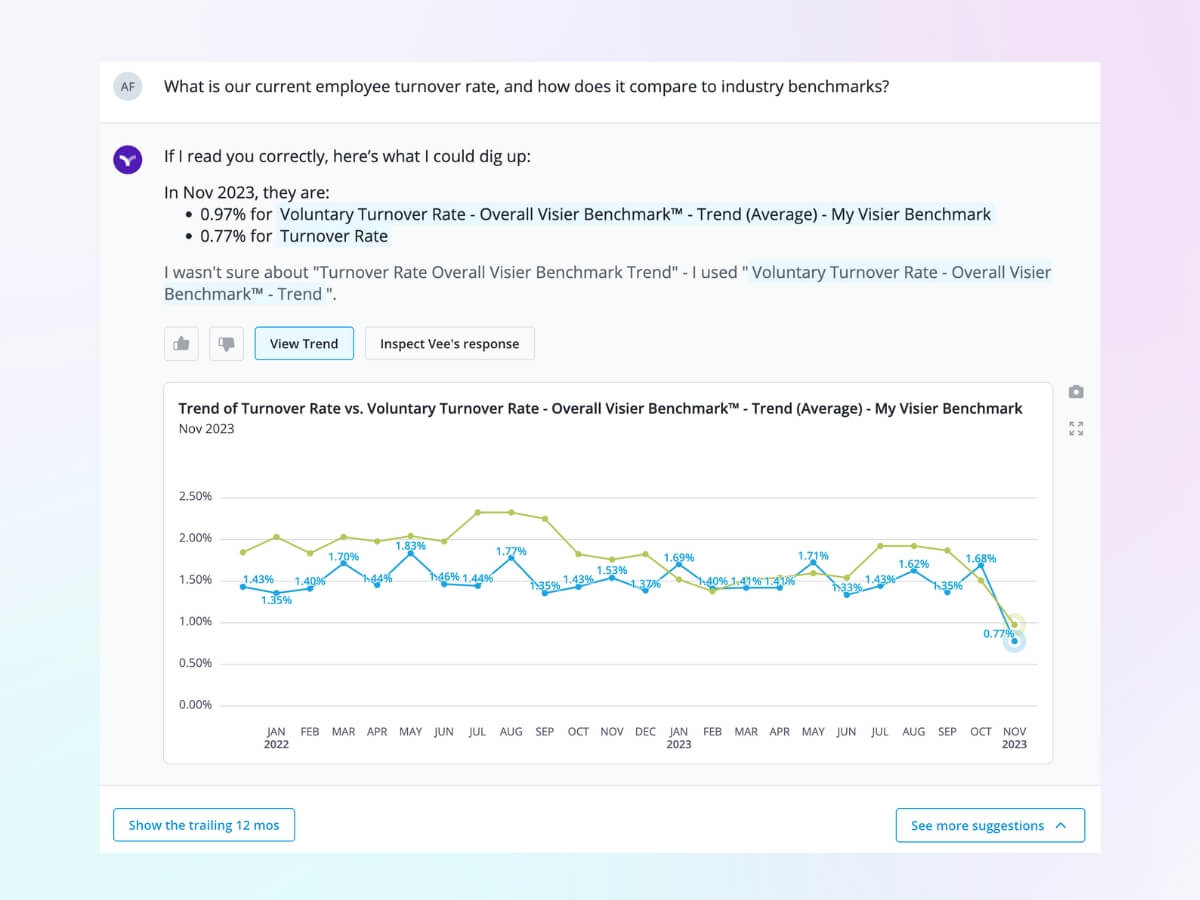
Employee turnover is always an area of concern for organizations that PA leaders need to keep tabs on, and it's far from static. The ability to keep an eye on current turnover rates and trends in real time can help point to areas where intervention may be needed or areas that requi further exploration.
4. Which managers have the highest volume of employee exits?
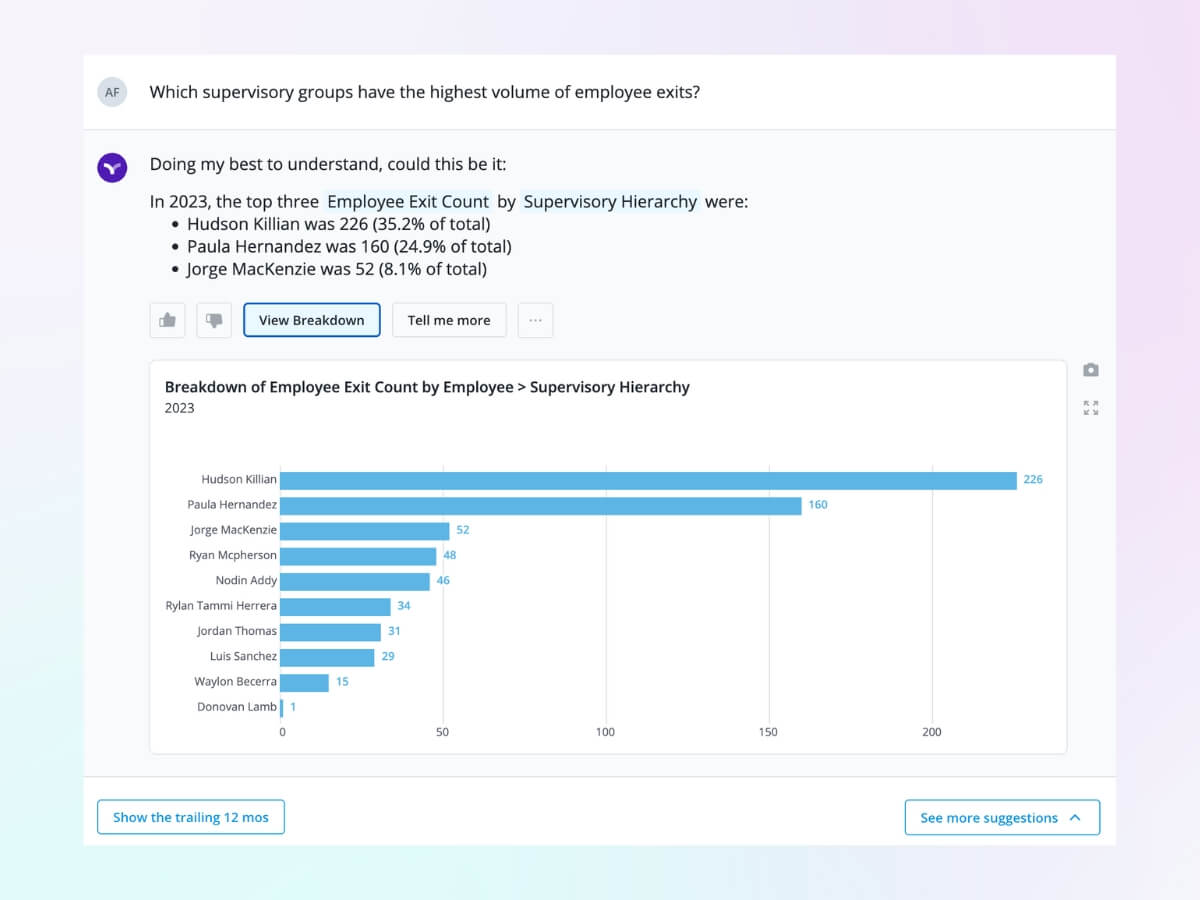
Managers have long been pointed to as the single greatest contributor to employee turnover. Understanding which managers have the highest volume of employee exits can identify opportunities for intervention, coaching, and training to improve managerial performance and reduce turnover. Managers with lower levels of employee exits may have effective best practices to share with their peers.
5. How does compa ratio compare by department year over year?
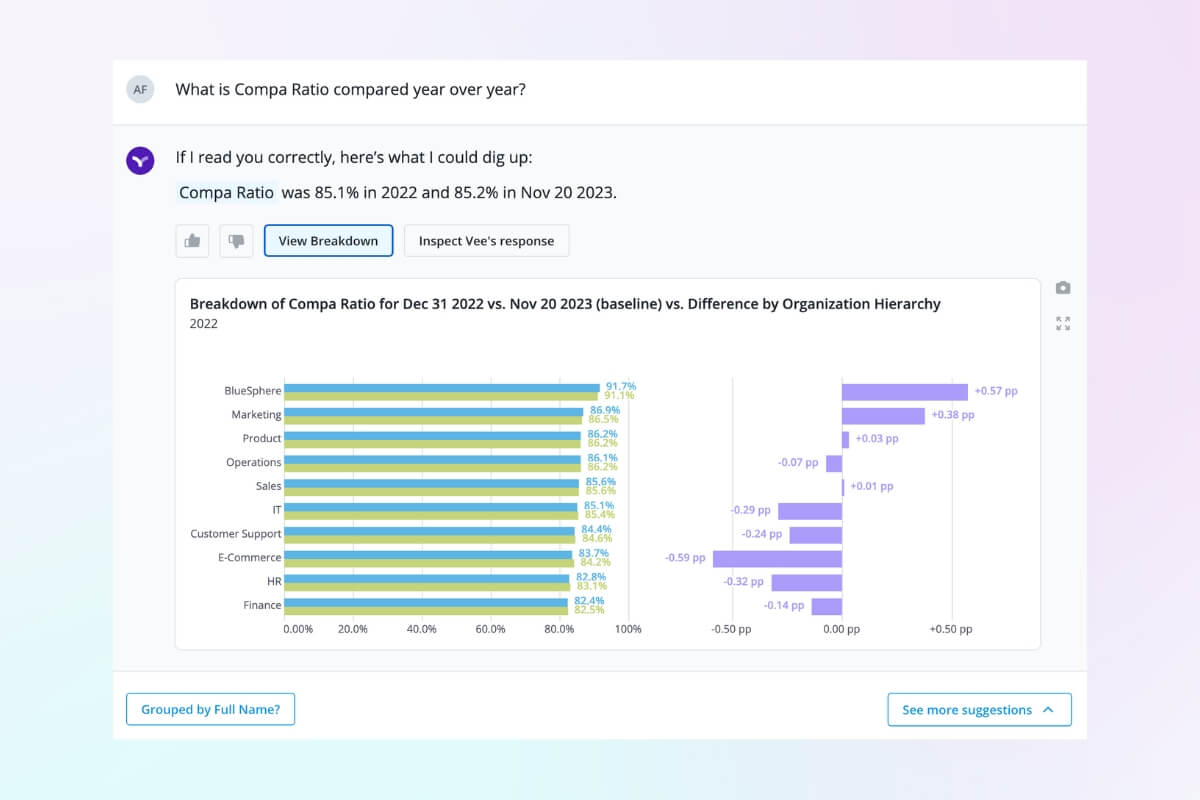
The compa ratio is the ratio of an employee’s salary to the midpoint of the salary range for their position. Comparing compa ratios across departments can help PA leaders identify trends in compensation that could reveal, for instance, whether certain departments are consistently paid above or below the market rate. These discrepancies can help identify pay gaps which may suggest opportunities to make adjustments.
Compa ratio analysis can also inform strategic decisions about workforce development, like where to invest in employee training or where new talent may be needed.
6. What drives compa ratio in our organization?
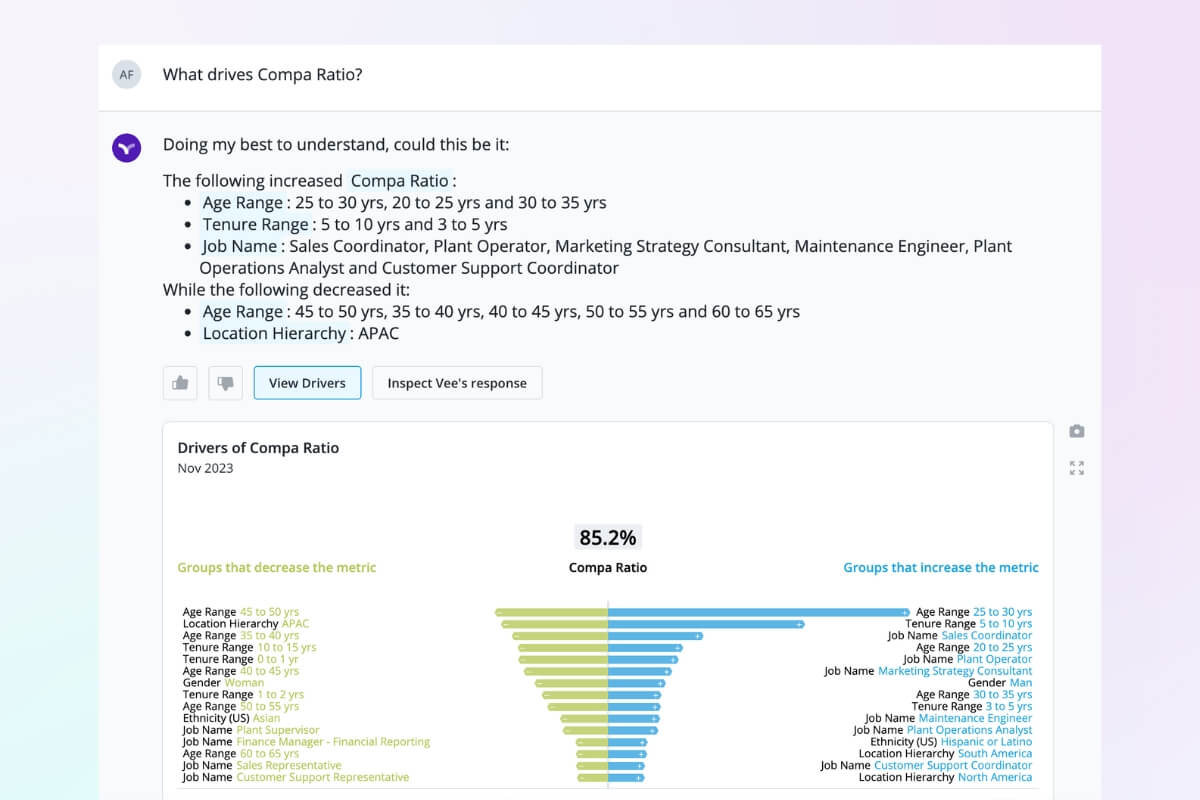
Understanding the factors that drive compa ratio can help PA leaders manage compensation more effectively. Compa ratios can be impacted by factors such as age, tenure, job, job location, and more. Without analysis, these impacts can lead to discrepancies and inequities that could lead to turnover or claims of discriminatory practices.
7. How does workplace type impact the resignation rate year over year?

Vee can help PA leaders quickly see how the type of workplace—on-site, remote, or hybrid—impacts resignation rates. This continues to be an area of debate and controversy; having real data can help PA leaders deliver insights that enable leaders to make well-informed decisions about the workplace structure to support employee engagement and retention.
8. How does employee promotion rate compare to learning hours completed?
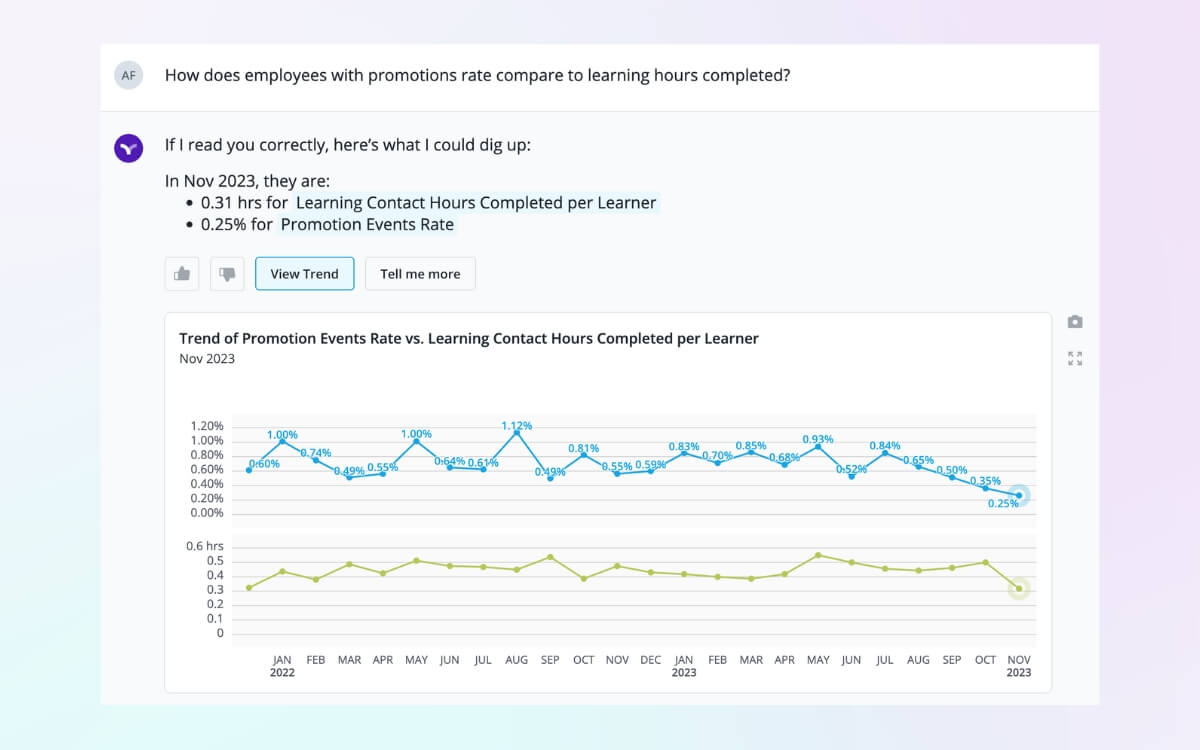
Is there a correlation between training hours and promotions? Vee can help you answer this question to determine if learning and development efforts are successfully aiding in upskilling or reskilling employees to take on new roles—and how this impact may be trending over time.
9. Which organizations attract high-performing talent internally?
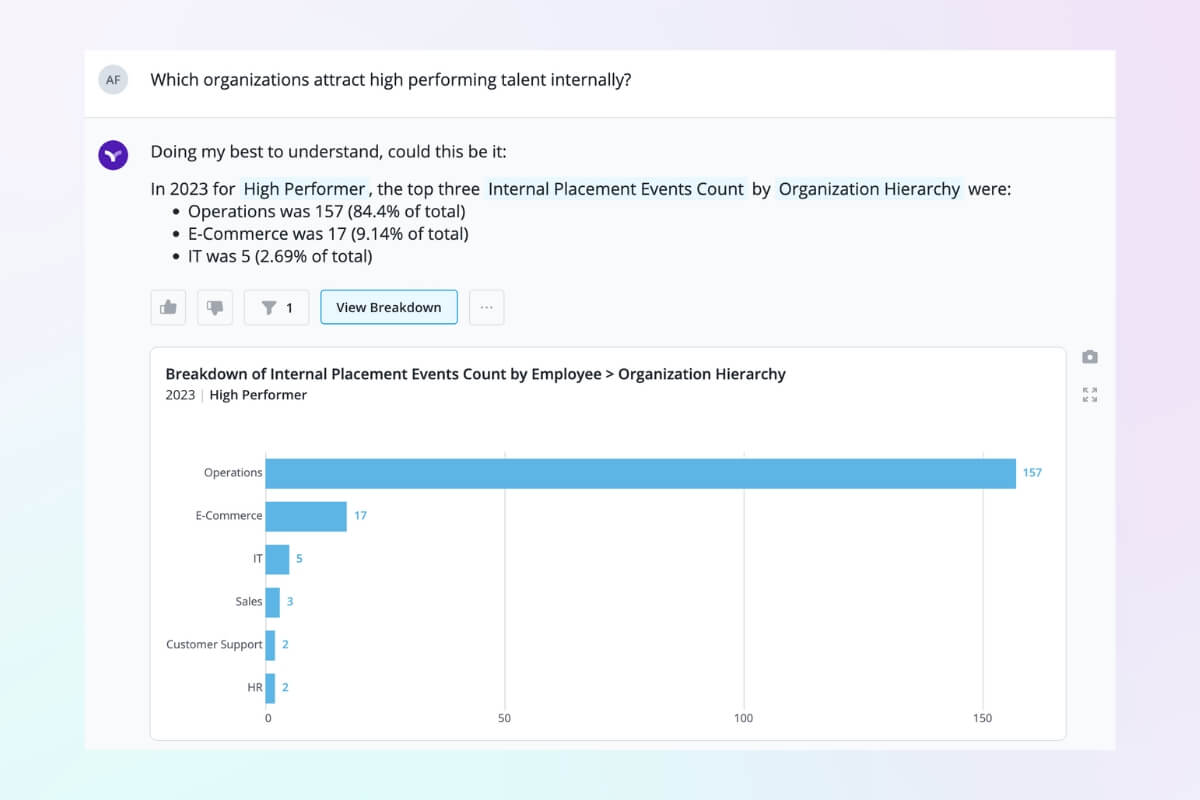
All organizations want to attract top talent, but few measure and monitor whether they actually do. Vee can help PA leaders determine which departments attract high-performing talent. PA leaders can ask questions to see how different business units compare and understand where the most high performers work.
10. Are our new hires progressing? What’s the trend of promotion rate by tenure band?

Understanding the rate at which new hires are promoted can provide insights into hiring quality. Higher-quality hires are more likely to be promoted. Understanding how this metric varies by department, employee demographics, and tenure can yield insights into where there are opportunities for improvements in talent acquisition, training, and development.
Using genAI to automate and enhance people analytics
These questions are just the tip of the iceberg. PA leaders can use Visier’s Vee to help automate and enhance processes, reduce ticket load and disruptions, and shift their focus from foundational to business impact.

Generative AI for people analytics and HR
Vee, Visier’s generative AI digital assistant delivers fast, intuitive, accessible workforce insights to people leaders. Learn the latest product updates here.
To keep up with the future of work, HR leaders need a strategy that's agile, adaptable, and rooted in data. GenAI can help close the gap between people data and business data. Ian Cook and Robert Sullivan share how.
Vee answers line manager's questions about the workforce in seconds. Here are 10 real examples of answers from Vee.
Generative AI innovations like digital assistants are changing the way we work, and pose significant security challenges. Are they secure enough to use with people data?
As the use of AI continues to evolve, it's critical to comply with AI regulations like the EU AI Act and the U.S. AI Bill of Rights. But where do you start?
